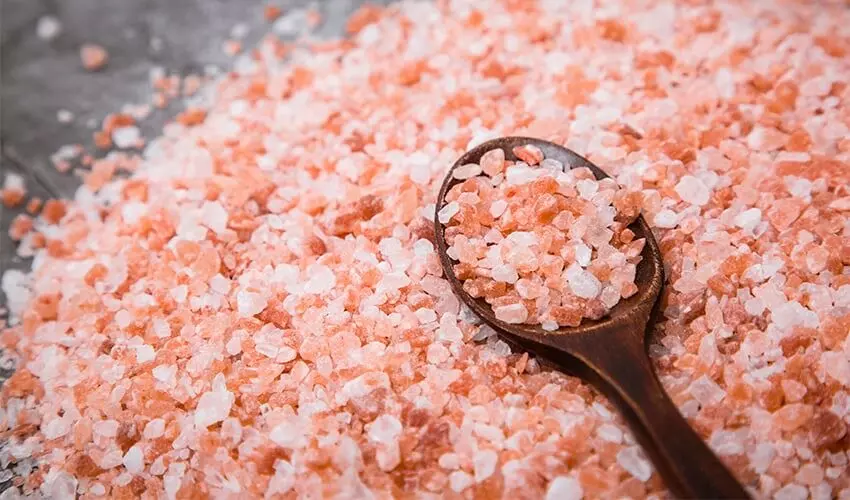Global Iodine Deficiency Disorders Prevention Day: Experts flag Himalayan salt, rock salt, sea salt
Health-conscious consumers don’t have to give up gourmet salts entirely
By - Sri Lakshmi Muttevi |
Hyderabad: October 21 is observed as Global Iodine Deficiency Disorders Prevention Day. It is a reminder of how iodine continues to shape public health. While India largely eliminated visible iodine deficiency decades ago through salt iodisation, nutrition experts are now warning of a quiet reversal.
The reason isn’t poverty or lack of access this time, it’s preference. A growing number of urban consumers are turning to pink Himalayan salt, rock salt, sea salt, and other boutique varieties marketed as “natural” or “unrefined.” These products, often lacking added iodine, are being promoted as healthier options in the wellness market. Behind this trend lies a public health risk that’s easy to overlook, the slow reappearance of iodine deficiency in populations that once had it under control.
The micronutrient we can’t live without
Iodine is a trace mineral essential for thyroid hormone production, which regulates metabolism, growth, and brain development. Even mild deficiency can impair cognitive function, fertility, and energy levels.
According to the World Health Organization (WHO), iodine deficiency remains the leading cause of preventable brain damage globally. In India, the National Iodine Deficiency Disorders Control Programme (NIDDCP) estimates that while over 90% of households use iodised salt, mild deficiencies persist in several states.
“People forget that iodine deficiency is not a problem that disappears forever. It is controlled through consistent fortification, not cured once and for all,” Dr. V. Madhavi, endocrinologist, told NewsMeter. “If urban consumers shift away from iodised salt for the sake of trends, we risk creating small but significant pockets of deficiency again.”
The Himalayan illusion
Himalayan pink salt, mined largely from Pakistan’s Khewra Salt Range, naturally contains over 80 trace minerals. Yet their quantities, including iron, magnesium, and potassium are nutritionally negligible.
“The idea that pink salt has more minerals is true in composition but irrelevant in nutrition,” explains Dr. Meenakshi Bhatia, clinical nutritionist at the Indian Institute of Nutrition Sciences. “You’d have to eat hundreds of grams of it to get any real benefit, which is impossible and unsafe due to sodium.”
More crucially, most boutique salts sold in India are non-iodised unless specifically labelled. Consumers drawn to the “natural” label are unknowingly giving up iodine fortification that prevents goitre, hypothyroidism, and cognitive issues in children.
Marketing vs. science
Social media and wellness influencers have popularised “chemical-free” and “unprocessed” food trends, often portraying iodised salt as industrial and inferior. This narrative has gained traction despite decades of public health data showing the opposite.
“Iodisation isn’t a chemical contamination, it’s a public health necessity,” says Dr. Neha Bansal, nutrition scientist. “When people replace iodised salt with pink or sea salt that’s non-iodised, they remove a crucial micronutrient from their diet without realising it.”
A global pattern re-emerging
This shift isn’t unique to India. Research in Australia, New Zealand, and Europe has found a resurgence of mild iodine deficiency linked to gourmet salt use and plant-based diets that exclude iodine-rich seafood and dairy.
In India, where vegetarianism is widespread and salt is the main iodine carrier, experts are beginning to notice a similar pattern. “We’re seeing borderline thyroid dysfunction in young adults who appear healthy. One of the first questions we ask now is, what kind of salt do you use?” says Dr. Madhavi.
Labelling and loopholes
While India mandates iodisation for edible salt, exceptions exist for industrial, export, or niche products. Non-iodised salts marketed as “organic” or “gourmet” often avoid clear iodine labelling or exploit regulatory gaps.
“Consumers assume all edible salt is iodised, which isn’t true. Some boutique brands skip the iodine step entirely but highlight words like ‘natural minerals’ to sound nutritious,” warns Dr. Bansal. She advises checking for “iodised” or “fortified with iodine” on packaging, rather than assuming it’s standard.
Balancing taste and nutrition
Health-conscious consumers don’t have to give up gourmet salts entirely. Experts suggest using iodised salt for everyday cooking while reserving other salts for flavour finishing or presentation.
“Iodine isn’t something you can get easily from other foods. Fortified salt remains the simplest, cheapest way to ensure sufficiency,” says Dr. Bhatia.
For those on low-sodium diets, doctors recommend discussing alternative iodine sources, such as fortified foods or supervised supplements, rather than eliminating salt.
A reminder worth its weight in salt
India’s success in tackling iodine deficiency took decades of sustained public awareness and policy. The wellness-driven shift toward unfortified salts risks undoing that progress.
“Trends come and go, but public health progress depends on consistency, not novelty,” says Dr. Bansal. “Choosing iodised salt remains one of the simplest and most effective nutritional decisions a person can make and it costs nothing extra.”
Key takeaways
• Himalayan and gourmet salts are usually non-iodised unless labelled.
• Trace minerals in these salts have no significant nutritional value at normal intake.
• Iodine deficiency can reappear even in urban areas if iodised salt use drops.
• Always check the label for ‘iodised’ or ‘fortified with iodine.’